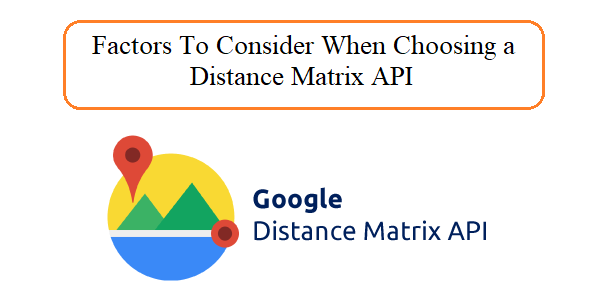A Distance Matrix API is an essential tool for businesses that rely on location-based services. It is a service that calculates the distance and time between two or more locations. It is used by businesses to optimize their logistics, plan routes, and estimate travel times.
Factors To Consider When Choosing a Distance Matrix API

When choosing a Distance Matrix API, businesses need to consider several factors, including the accuracy of the data, the API’s pricing plan, and the level of customization available. Other factors to consider include the API’s speed, ease of integration, and the level of support provided.
929 Area Code: Time Zone, Location Map, and Who’s Calling?
1. Accuracy Of The Data
The accuracy of the data provided by a Distance Matrix API is crucial for businesses that rely on location-based services. The API should provide accurate distance and time estimates between multiple locations. The accuracy of the data can be affected by several factors, such as the quality of the mapping data used, the frequency of updates, and the algorithm used to calculate the distance and time estimates.
2. Pricing Plan
The pricing plan is another crucial factor to consider when choosing a Distance Matrix API. The pricing plan should be affordable and should provide value for money. Some APIs charge based on the number of requests made, while others charge based on the number of locations included in each request. Businesses should choose an API that offers a pricing plan that suits their budget and usage needs.
3. Level Of Customization
The level of customization available is another important factor to consider when choosing a Distance Matrix API. Businesses should choose an API that allows them to customize the data returned to suit their specific needs. This could include customizing the units of measurement used, the format of the data returned, and the type of data returned.
4. API Speed
The speed of the API is another crucial factor to consider when choosing a Distance Matrix API. The API should be fast enough to handle the business’s needs without causing delays or interruptions. The speed of the API can be affected by several factors, such as the server load, the quality of the internet connection, and the API’s architecture.
5. Ease Of Integration
The ease of integration of the API is another crucial factor to consider when choosing a Distance Matrix API. The API should be easy to integrate into the business’s existing systems without requiring significant changes or disruptions. The API should also be compatible with the programming languages and frameworks used by the business.
6. Level Of Support
The level of support provided by the API provider is another crucial factor to consider when choosing a Distance Matrix API. The API provider should offer comprehensive support, including documentation, tutorials, and technical support. The support should be available 24/7 to help businesses resolve any issues that may arise.
Comparing Distance Matrix APIs: Pros And Cons

When comparing Distance Matrix APIs, businesses need to consider several factors, including the accuracy of the data, the pricing plan, the level of customization available, and the level of support provided. Here is a comparison of the pros and cons of some of the popular Distance Matrix APIs.
Google Maps Distance Matrix API
Pros
- Accurate distance and time estimates
- Real-time traffic data
- Multiple modes of transportation supported
- Easy to integrate
- Comprehensive documentation and support
Cons
- Limited customization options
- Can be expensive for high-volume usage
Mapbox Distance API
Pros
- Accurate distance and time estimates
- Real-time traffic data
- Comprehensive customization options
- Multiple modes of transportation supported
- Affordable pricing plan
Cons
- Limited documentation and support
HERE Routing API
Pros
- Accurate distance and time estimates
- Real-time traffic data
- Comprehensive customization options
- Multiple modes of transportation supported
- Comprehensive documentation and support
Cons
- Can be expensive for high-volume usage
Bing Maps Distance Matrix API
Pros
- Accurate distance and time estimates
- Real-time traffic data
- Multiple modes of transportation supported
- Affordable pricing plan
- Comprehensive documentation and support
Cons
- Limited customization options
Tips For Evaluating and Selecting a Distance Matrix API
Here are some tips for evaluating and selecting a Distance Matrix API.
1. Evaluate The Accuracy Of The Data
Businesses should evaluate the accuracy of the data provided by the API. The API should provide accurate distance and time estimates between multiple locations.
2. Consider The Pricing Plan
Businesses should consider the pricing plan offered by the API provider. The pricing plan should be affordable and should provide value for money.
3. Evaluate The Level Of Customization
Businesses should evaluate the level of customization available with the API. The API should allow businesses to customize the data returned to suit their specific needs.
4. Consider the API Speed
Businesses should consider the speed of the API. The API should be fast enough to handle the business’s needs without causing delays or interruptions.
5. Evaluate the Ease of Integration
Businesses should evaluate the ease of integration of the API. The API should be easy to integrate into the business’s existing systems without requiring significant changes or disruptions.
6. Evaluate the Level of Support
Businesses should evaluate the level of support provided by the API provider. The provider should offer comprehensive support, including documentation, tutorials, and technical support.




